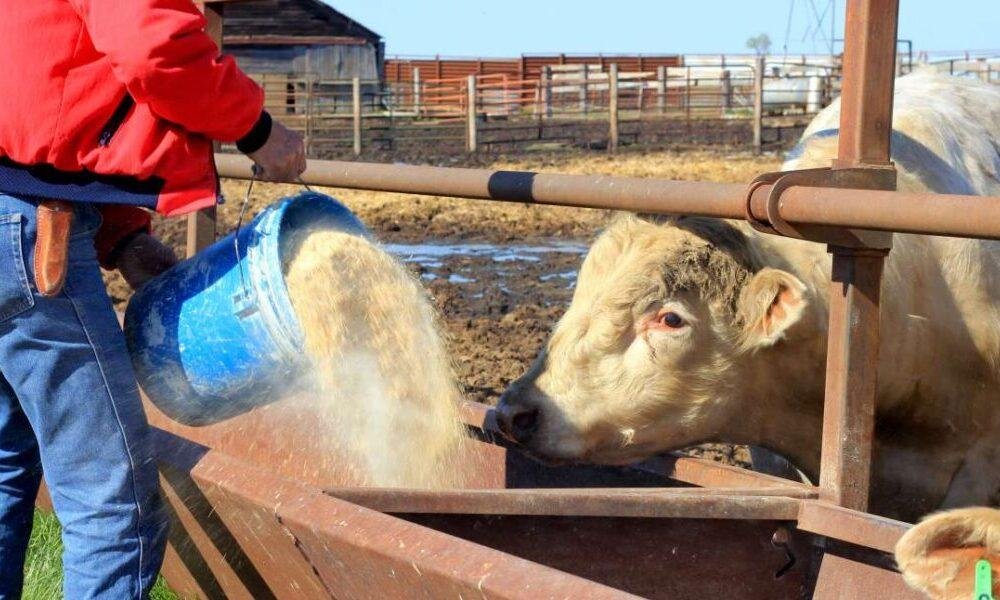-
Fil d’actualités
- EXPLORER
-
Blogs
Cattle Feed Market Opportunities: Technological Advancements in Feed Processing and Additives

Introduction
The Cattle Feed Market is witnessing transformative growth propelled by rapid technological innovations in feed processing and additives. These advancements are revolutionizing how feed is formulated, manufactured, and utilized, creating significant opportunities to improve animal nutrition, health, and productivity. This article explores the latest technological developments shaping the cattle feed industry and the potential benefits they bring to producers and end-users alike.
Technological Innovations in Feed Processing
Feed processing technology plays a pivotal role in enhancing feed quality, safety, and digestibility. Key advancements include:
1. Precision Grinding and Pelleting
Modern grinding equipment and pellet mills enable uniform particle size and consistent feed texture. Precision grinding improves nutrient availability by increasing surface area for enzymatic digestion. Pelleting enhances feed intake by making feed easier to consume and reduces feed wastage. Additionally, pelleted feeds improve storage stability and reduce contamination risks.
2. Extrusion and Expansion Technologies
Extrusion involves high-temperature, high-pressure processing that transforms feed ingredients into highly digestible forms. Expansion technology applies similar principles but with less intense processing, preserving heat-sensitive nutrients. These methods improve starch gelatinization, protein digestibility, and deactivate anti-nutritional factors, leading to better feed conversion rates.
3. Advanced Drying and Cooling Systems
Efficient drying and cooling mechanisms preserve feed quality post-processing by preventing mold growth and nutrient degradation. Innovations such as fluidized bed dryers ensure uniform drying with minimal energy consumption, maintaining the nutritional integrity of feed.
4. Automation and Process Control
Integration of automation and sensor-based control systems optimizes processing parameters in real-time, ensuring consistent product quality, reducing human error, and enhancing operational efficiency.
Emerging Additive Technologies
Feed additives have become essential for boosting cattle health and production efficiency. Recent advancements include:
1. Enzymes and Probiotics
Enzymes like phytase, cellulase, and protease improve digestion of complex feed components, increasing nutrient absorption. Probiotics enhance gut microbiota balance, supporting immunity and reducing incidence of digestive disorders. Together, they contribute to healthier animals and better feed utilization.
2. Organic Trace Minerals and Vitamins
Organic forms of minerals and vitamins offer higher bioavailability compared to inorganic counterparts. This means animals can absorb and utilize these nutrients more effectively, enhancing growth, reproduction, and disease resistance.
3. Phytogenics and Natural Extracts
Plant-based additives, including essential oils, herbs, and antioxidants, are gaining traction as natural growth promoters and immune enhancers. They provide an alternative to antibiotics, aligning with increasing regulatory restrictions and consumer demand for natural products.
4. Novel Protein Sources
Innovations in protein additives such as insect meal, algae, and single-cell proteins provide sustainable and high-quality alternatives to traditional protein sources like soybean and fishmeal. These novel additives help reduce environmental impact while maintaining nutritional adequacy.
Benefits of Technological Advancements
The integration of these technological innovations in feed processing and additives offers multiple advantages:
-
Improved Nutritional Value: Enhanced digestibility and nutrient availability translate into better growth rates, milk yields, and overall animal performance.
-
Feed Efficiency: Optimized feed formulations reduce feed conversion ratios, lowering feed costs per unit of production.
-
Animal Health: Additives promoting gut health and immunity reduce veterinary expenses and mortality rates.
-
Sustainability: Use of alternative protein sources and natural additives supports environmental goals and reduces reliance on scarce resources.
-
Safety and Consistency: Advanced processing and quality control minimize contamination risks and ensure uniform product quality.
These benefits contribute to increased profitability for farmers and feed producers.
Market Opportunities Driven by Technology
Technological progress opens several growth avenues within the cattle feed market:
-
Customization of Feed Formulations: Precision nutrition enabled by advanced processing allows tailoring of feeds to specific cattle breeds, ages, and production goals.
-
Expansion of Specialty Feeds: Growing demand for organic, non-GMO, and additive-enriched feeds creates niche markets.
-
Integration with Digital Farming: Combining feed technology with IoT devices and data analytics supports real-time monitoring and adaptive feeding strategies.
-
Export Potential: Higher quality and innovative feeds meet stringent international standards, enhancing trade opportunities.
-
Collaborative R&D: Partnerships between feed manufacturers, biotech firms, and academia accelerate development and commercialization of novel feed solutions.
Such opportunities can propel the cattle feed market toward sustainable and technologically sophisticated growth.
Challenges and Considerations
While promising, adoption of new technologies must address certain challenges:
-
High Initial Investment: Advanced equipment and R&D activities require substantial capital outlay.
-
Technical Expertise: Effective utilization demands skilled personnel and ongoing training.
-
Regulatory Approvals: New additives and processing methods must comply with safety and labeling regulations.
-
Market Acceptance: Educating farmers and stakeholders on benefits is crucial for adoption.
-
Supply Chain Adaptation: Sourcing novel raw materials and integrating new processes need careful planning.
Overcoming these hurdles through strategic investment and collaboration is essential for realizing full potential.
Conclusion
The cattle feed market stands at the cusp of significant transformation fueled by technological innovations in feed processing and additives. These advancements enhance feed quality, animal health, and production efficiency while supporting sustainability. By embracing these technologies, industry players can unlock new growth opportunities, meet evolving consumer demands, and strengthen their competitive position in the global livestock nutrition landscape. Continued focus on innovation, regulatory compliance, and stakeholder education will be key to driving long-term success.





